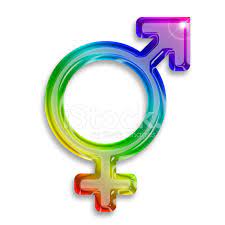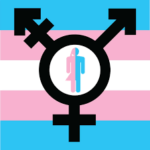Gender dysphoria is a term that has gained increased visibility in recent years, yet it remains an area of misunderstanding for many. At its core, gender dysphoria is about the psychological distress that arises from a mismatch between one’s gender identity and assigned sex at birth. This article aims to shed light on the nuances of gender dysphoria, its significance in the DSM-5, and the various avenues available for support and treatment. Whether you are seeking information for yourself, a loved one, or simply out of curiosity, this guide will help clarify some key aspects of this important topic.
Understanding Gender Dysphoria: The Basics Explained
Gender dysphoria can be understood as a profound sense of discomfort or distress that individuals experience when their gender identity does not align with the sex they were assigned at birth. This feeling can manifest in various forms, including emotional distress, anxiety, and depression. Many individuals with gender dysphoria feel a deep longing to be recognized as their true gender, leading to feelings of isolation and confusion in a world that often fails to validate their experiences.Mtf Facial Feminization Before And After
In a broader context, gender identity refers to a person’s internal understanding of themselves as male, female, both, neither, or anywhere along the gender spectrum. This identity may or may not correspond to the biological sex assigned at birth. It’s crucial to recognize that experiencing gender dysphoria is not synonymous with being transgender; rather, it indicates a particular struggle that some transgender individuals may face in their journey to align their external lives with their internal identities.
DSM-5: What It Says About Gender Dysphoria
The Diagnostic and Statistical Manual of Mental Disorders, Fifth Edition (DSM-5), is a key reference for mental health professionals and includes criteria for diagnosing gender dysphoria. According to the DSM-5, gender dysphoria involves a marked incongruence between an individual’s experienced or expressed gender and the gender they were assigned at birth. This incongruence must persist for at least six months and is characterized by a strong desire to be of the other gender, a significant discomfort with one’s assigned sex, and a desire to be treated as the other gender.
The inclusion of gender dysphoria in the DSM-5 is a significant step toward recognition and understanding. It provides a framework for validating the experiences of those who face gender dysphoria and emphasizes the importance of mental health in their overall well-being. However, it also raises questions regarding medicalization and whether labeling such experiences might inadvertently contribute to stigma.
Signs and Symptoms: How to Recognize Gender Dysphoria
Recognizing gender dysphoria can vary significantly from person to person, but some common signs and symptoms include persistent feelings of discomfort with one’s assigned gender, a strong desire to be treated as the gender they identify with, and significant distress related to their physical body. Individuals may express a desire to change their name, appearance, or pronouns to better align with their gender identity.
Other symptoms may include social withdrawal, anxiety, depression, or even self-harm. It’s important to understand that these feelings can be incredibly complex and may fluctuate over time. Some individuals may find relief through social transition, medical intervention, or a combination of both, while others may not feel the need for any change at all. Each person’s experience is unique, and understanding this can be key in providing support.
The Importance of Diagnosis: Why It Matters
Diagnosis of gender dysphoria is significant not just for clinical understanding but also for accessing necessary resources and support. A formal diagnosis can open doors to mental health support, medical treatments, and social services that can greatly enhance an individual’s quality of life. It also allows individuals to articulate their experiences in a way that can be recognized by healthcare providers and support networks.
That said, it’s important to approach the diagnosis process compassionately. The emphasis should be on affirming the individual’s identity rather than labeling them as "disordered." The goal is to provide supportive pathways that help alleviate the distress associated with gender dysphoria, encouraging individuals to live authentically in their true gender.
Treatment Options: Navigating the Journey Ahead
Treatment for gender dysphoria can take many forms and is ultimately tailored to the individual’s needs and desires. For some, this may involve social transition activities such as changing their name, pronouns, or clothing to align with their gender identity. Others may seek medical interventions, such as hormone therapy or surgeries, to further align their physical appearance with their gender identity.
It’s essential to work closely with healthcare professionals who are knowledgeable in gender-affirming care. These professionals can help navigate options, set realistic expectations, and provide ongoing support. The journey is highly personal, and there’s no one-size-fits-all solution. What works for one person may not be the right path for another, so finding a supportive healthcare team is crucial.
Support Systems: Finding Your Community and Allies
Finding a supportive community can make a world of difference for individuals experiencing gender dysphoria. Many people benefit from connecting with others who have similar experiences through LGBTQ+ organizations, support groups, or online forums. These communities provide not only emotional support but also valuable resources and information to assist individuals in navigating their journeys.
Allies, including friends and family, can also play a vital role in someone’s experience. Open communication, willingness to learn, and commitment to affirming an individual’s identity can create a supportive environment that fosters growth and acceptance. Building a network of allies can reduce feelings of isolation and provide a sense of belonging that is essential for mental health and overall well-being.
Myths and Misconceptions About Gender Dysphoria
There are several myths and misconceptions surrounding gender dysphoria that can lead to stigma and misunderstanding. One common myth is that gender dysphoria is just a phase or something that people can "grow out of." In reality, for many, the feelings associated with gender dysphoria are deeply ingrained and not a fleeting experience. It’s important to approach this topic with an open mind and recognize the diversity of experiences within the transgender community.
Another misconception is that individuals with gender dysphoria are simply seeking attention or are confused about their identity. The reality is that gender dysphoria can cause substantial emotional pain and distress. Individuals are often seeking validation and understanding rather than attention. Challenging these myths and educating oneself and others can help create a more supportive environment for those experiencing gender dysphoria.
Moving Forward: Living Authentically and Proudly
Living authentically is a significant part of overcoming the challenges of gender dysphoria. For many, this means embracing their true gender identity and allowing themselves to express it in ways that feel right for them. This journey can involve self-discovery, exploration, and sometimes difficult conversations with family and friends. However, taking these steps can foster a sense of empowerment and pride.
While the path may be fraught with obstacles, there is also immense beauty in living authentically. Many individuals report feeling a profound sense of relief and happiness once they start aligning their external lives with their internal identities. By continuing to advocate for acceptance and understanding, both for themselves and others, individuals can contribute to a society where everyone is encouraged to live their truth without fear of judgment or discrimination.
In conclusion, understanding gender dysphoria is crucial in fostering compassionate conversations and creating supportive environments for individuals navigating their gender identities. From the DSM-5’s recognition to the diverse treatment options available, it’s clear that this is a complex yet important aspect of human experience. By dispelling myths and misconceptions, cultivating supportive networks, and advocating for authenticity, we can all play a role in promoting understanding and acceptance. Whether you’re directly affected or simply looking to learn more, know that every step taken toward understanding gender dysphoria contributes to a more inclusive world for everyone.


